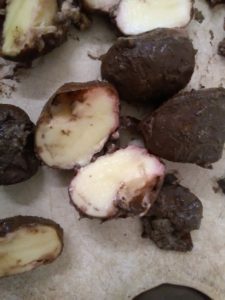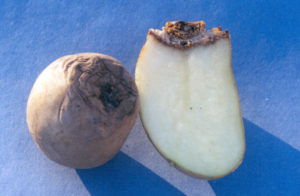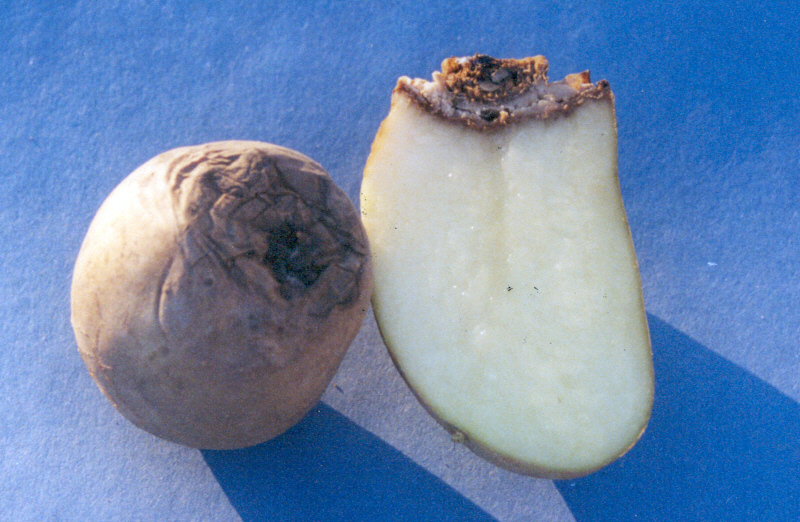Wet summer raises risk of potato storage rots
22 December 2017It has been said before that potatoes are not so much a crop but rather just a large collection of diseases and problems. The number of serious pests and diseases to which the crop is susceptible makes a depressing roll call and it is only due to the highly skilled nature of producers that these risks are sufficiently managed and contained to deliver the Scottish crop. Keeping on top of issues through the season needs full time vigilance and that same vigilance is needed once the crop goes in to storage too. Weather is a major driver of disease problems and the wet end to the summer helped to boost yields but also added to the risk of some of the major causes of store breakdown.
August saw a run of high risk blight periods and reports of tuber blight coming in to the SRUC crop clinic is higher this year as a result. This is not surprising given that there were long runs of high risk periods in some areas. Wet weather also increases the risk of in-field bacterial blackleg and wet conditions at harvest and slower drying also ups the risk of rots. Fortunately levels of rots have so far been fairly low but it is early in the season for them to be showing in stores. Usually this is a feature of our January crop clinic samples. Regular inspection is key – monitoring store temperature should be almost constant with many systems and weekly inspection of boxes is sensible. Sampling and incubating tubers lets you get a better feel for their potential to break down than just inspecting the boxes in cold storage will. Bringing 100 tubers or so into room temperature will give a better idea for what is present. Keeping stores cool is of course important and advice on ideal temperatures had been modified so that for seed ideally 3oC should be the target, and for a ware a little colder at 2oC to 2.5 oC. Whether to grade any rots detected out or not is always a judgement call as there is a high risk of smearing infection on to other tubers but in general at low levels it is worth picking out rots and at the other end of the scale, with high levels of rots, positive ventilation to really dry them off might be required. Any stocks with rots present to any significant degree are probably not best suited to long term storage.
Other issues reported in our crop clinic this year are black dot and powdery scab – the latter is favoured by wet conditions so again not a surprise after the summer. Slugs and related damage have also been an issue with examples of dry rot coming in over damage being seen. Planning ahead for powdery scab and testing soils is crucial as avoiding infected fields remains the best way of reducing powdery scab risk. Other health issues worth testing for over the winter period for fields planned for potatoes are PCN and TRV (the nematode borne spraing virus). Tests are also available for black dot and rhizoctonia to help guide you to low risk fields. Given how many risks are attached to potatoes, reducing some of them with pre-planning seems only sensible.
Fiona Burnett (SRUC) for the Farm Advisory Service
Sign up to the FAS newsletter
Receive updates on news, events and publications from Scotland’s Farm Advisory Service



